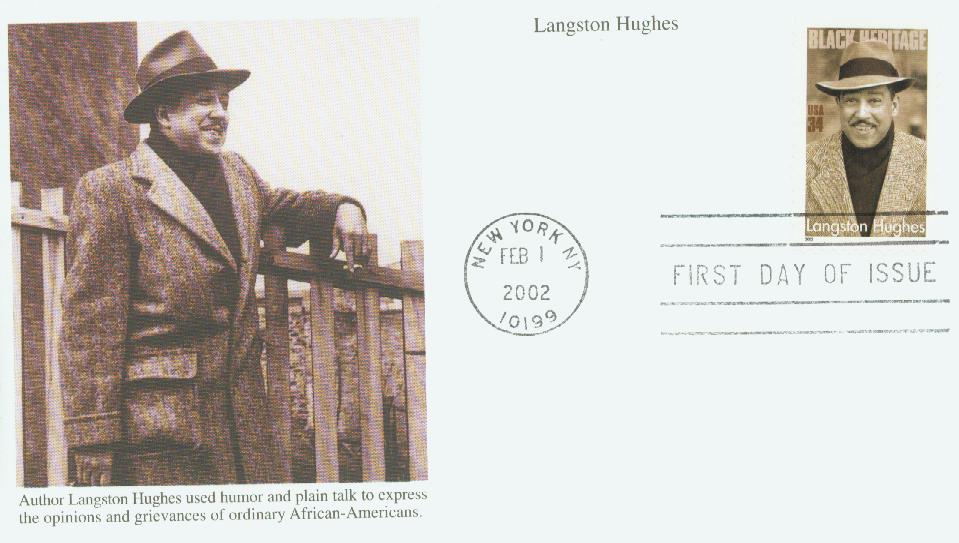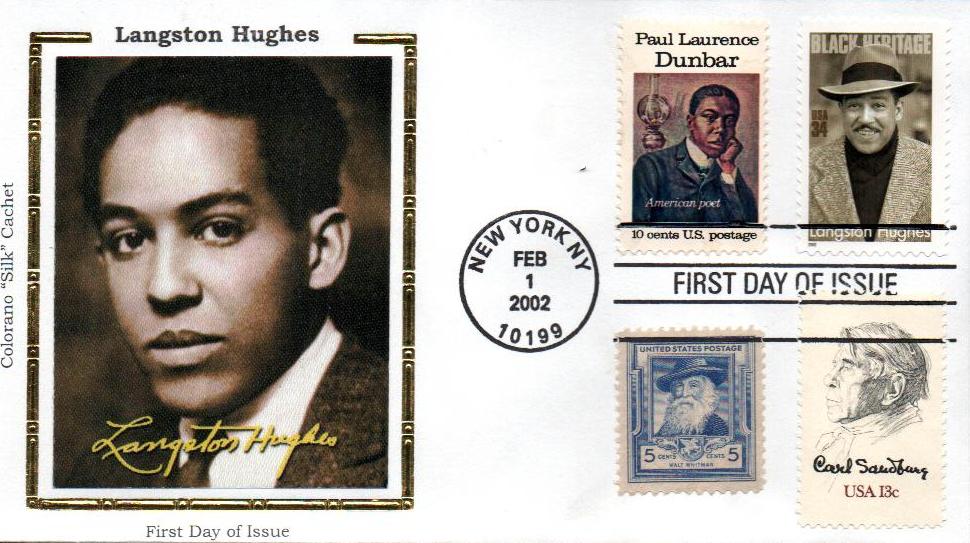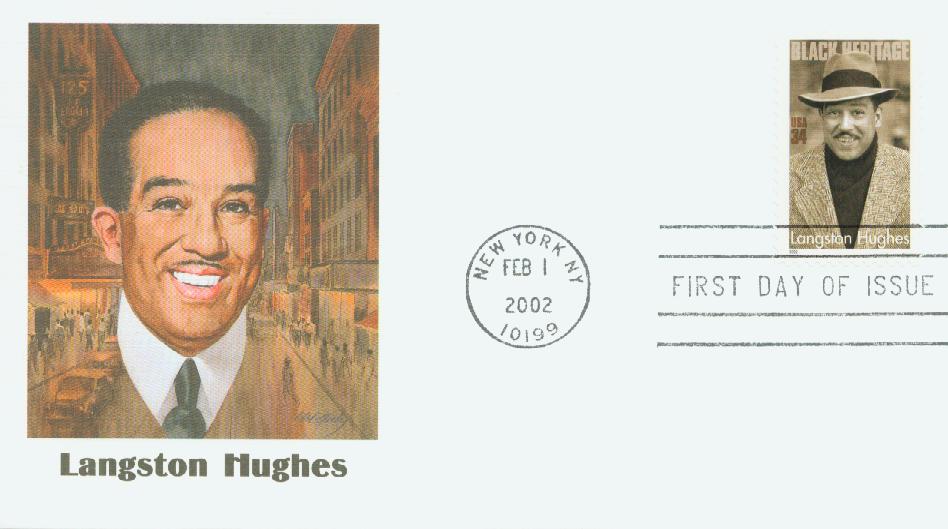
James Mercer Langston Hughes was born on February 1, 1901, in Joplin, Missouri.
Hughes’ father left his family shortly after he was born and spent most of his childhood in Lawrence, Kansas with his grandmother. After she died, he lived with his mother and family friends in Illinois and Ohio.
Hughes experimented with writing from an early age and selected as class poet when he was in grammar school. By high school he was writing for the school paper, editing the yearbook, and writing poems, short stories, and plays. It was during this time that he wrote his first jazz poem, “When Sue Wears Red.” Jazz poems are those that have a jazz-like rhythm or improvisation.
In 1921, Hughes published what would become his signature poem, “The Negro Speaks of Rivers,” in The Crisis, the official magazine for the National Association for the Advancement of Colored People (NAACP). His first and last published poems were in this magazine, and more of his poems were published there than anywhere else.
In the early 1920s, Hughes worked a variety of odd jobs. He then worked briefly as a crewman aboard the SS Malone, which enabled him to travel to West Africa and Europe. He enjoyed his time in Paris and England, but returned to the US in 1924. Living in Washington, DC, he found work as a personal assistant to Carter G. Woodson at the Association for the Study of African American Life and History. However, the job allowed little time for writing, so he quit to focus more on that. Around this same time he published his first book of collected poetry.
Hughes then went to Lincoln University, earning a BA in 1929. After that he moved to New York where he became a leader of the Harlem Renaissance – a revival of African American art and literature, largely based in Harlem, Manhattan, New York City. Hughes’s work largely focused on the lives of working class African Americans. Hughes’s writing captured ordinary lives full of struggle, joy, laughter, and music. Hughes sought to unite people of African descent around the world and promote pride in their diverse cultures.
With the support of several patrons, Hughes published his first novel, Not Without Laughter, in 1930. It won the Harmon Gold Medal for literature. He helped establish the New York Suitcase Theater in 1931 and published his first collection of short stories, The Ways of White Folks, in 1934. The following year he received a Guggenheim Fellowship and co-wrote the screenplay for Way Down South.
Hughes then went to Chicago in 1941 and founded The Skyloft Players to encourage and support black playwrights and provide theater “from the black perspective.” Shortly after he started writing a column for the Chicago Defender that ran for 20 years. The work he submitted has been called some of his “most powerful and relevant work.” Hughes also contributed to the literary magazine Common Ground, and wrote stories, poems, and plays for children. Hughes felt it was important to support young black writers. He offered them advice and helped them meet publishers and others who could help their voices be heard.
In 1967, Hughes suffered from complications following an abdominal surgery and died on May 22. He received a number of awards and honors during his lifetime, including two honorary degrees. After his death, the City College of New York established the Langston Hughes Medal. His New York home has been placed on the National Register of Historic Places, and there are multiple schools named in his honor.
Click here to read some of Hughes’s poems.
| FREE printable This Day in History album pages Download a PDF of today’s article. Get a binder or other supplies to create your This Day in History album. |
Click here to see what else happened on This Day in History.




